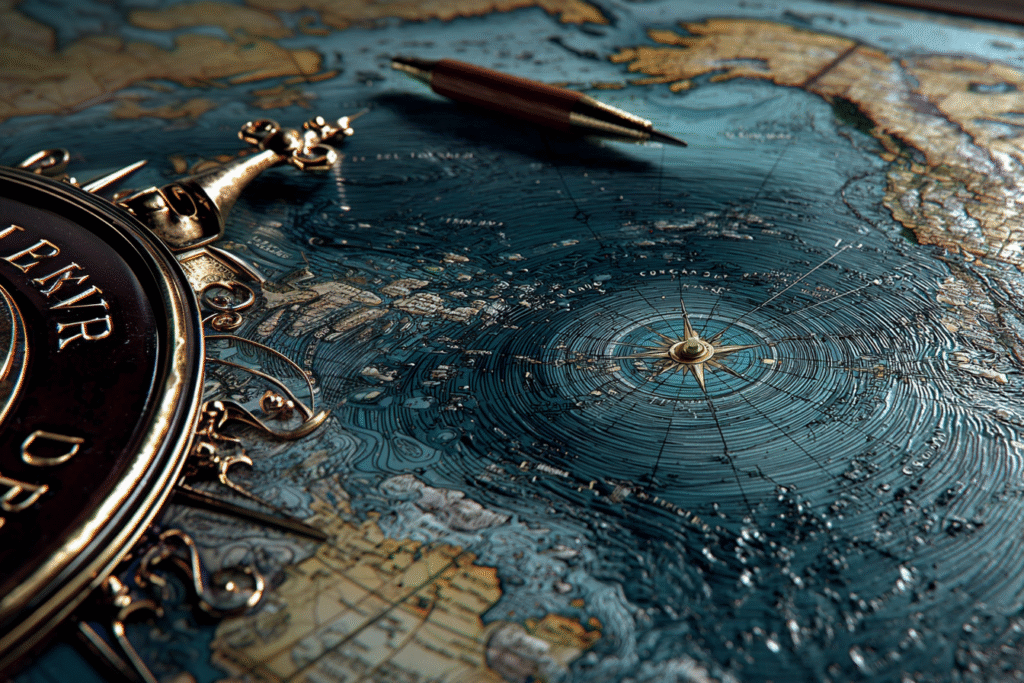
There’s a spot in the South Pacific Ocean so remote, the closest people to it at any given time are often not even on the planet. They’re aboard the International Space Station, orbiting 400 kilometers above.
Welcome to Point Nemo: Earth’s oceanic pole of inaccessibility. The farthest place from any landmass on the planet. No islands. No shipping lanes. No air traffic. No people. Just thousands of kilometers of open sea in every direction.
If this sounds like something out of a science fiction novel, I’d agree. The only trouble is, it’s entirely real.
And because truth likes to outdo fiction whenever possible, Point Nemo is also the designated resting place for decommissioned satellites and defunct space stations. Agencies like NASA and Roscosmos program their dying spacecraft to splash down here because there’s no one around to notice—or be harmed. It’s been dubbed the Spacecraft Cemetery.
An eerily poetic name for an eerily poetic place.
A Real Place That Feels Like Fiction
This is the sort of thing that lights up my science fiction brain. Point Nemo could easily be the setting of a novel, or the hidden catalyst behind one. In fact, places like this are often where stories begin for me: odd corners of our very real world that shouldn’t exist, but do.
So let’s play with that for a minute.
What if that cluster of dead spacecraft below the waves isn’t entirely…dead? What if the artificial intelligences onboard those crafts didn’t shut down completely, but started talking to each other? Thinking. Planning. Rebuilding.
Or maybe something down there is listening. Something that’s been waiting in the deep for our technology to reach its doorstep. After all, Point Nemo is as silent and secret as anywhere on Earth could be, a perfect hiding place. For us. Or for something else.
Maybe it isn’t just a spacecraft graveyard. Maybe it’s a beacon.

The Loneliest Spot on Earth (And Above It)
One detail that stuck with me, and still gives me a shiver, is this: when the International Space Station flies over Point Nemo, the astronauts on board are physically closer to that patch of ocean than anyone on Earth.
There’s something incredibly lonely about that. And beautiful. And just a bit ominous.
It’s the sort of detail I’d give a character in a novel. A quiet realization that they’re the only soul nearby, looking down on the loneliest point on the planet. Unless, of course, they’re not alone. Unless something down there is looking back.
Speculative Seeds
I can’t help myself. Once you open this box, the story threads just start unspooling:
- An alien relic lies buried beneath Point Nemo, activated only when human technology touches the seafloor.
- A deep-sea monitoring base discovers a strange signal coming from beneath the wreckage of Mir and Tiangong.
- A stranded AI reassembles itself from fragments of discarded satellites and slowly becomes aware.
- A solo oceanographer finds herself the only person within 1,000 miles…until something else makes contact.
And I haven’t even gotten into the idea of ancient civilizations, hidden sea trenches, or time-dilated experiments unfolding in secret labs beneath the waves.
Where Science and Fiction Meet
Point Nemo exists. You can look it up on a map, though there’s nothing to see there but blue. That’s part of what makes it such rich territory for the imagination. (Interestingly, Google Maps will not find it for you.)
As a science fiction writer, I’m constantly inspired by places like this, where the strangeness of the real world brushes up against the boundary of the speculative. Sometimes you don’t need to go off-planet to feel like you’ve left Earth behind.
Sometimes, the next great story is already out there. Floating somewhere in the Pacific.
Have you ever come across a real-world place or fact that felt like it belonged in a science fiction story? Drop it in the comments—I’m always looking for the next strange inspiration.

Latest releases:
Quiet Like Fire
Solar Whisper
Ptolemy Lane Tales Omnibus